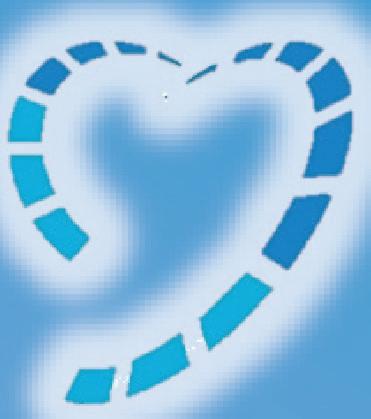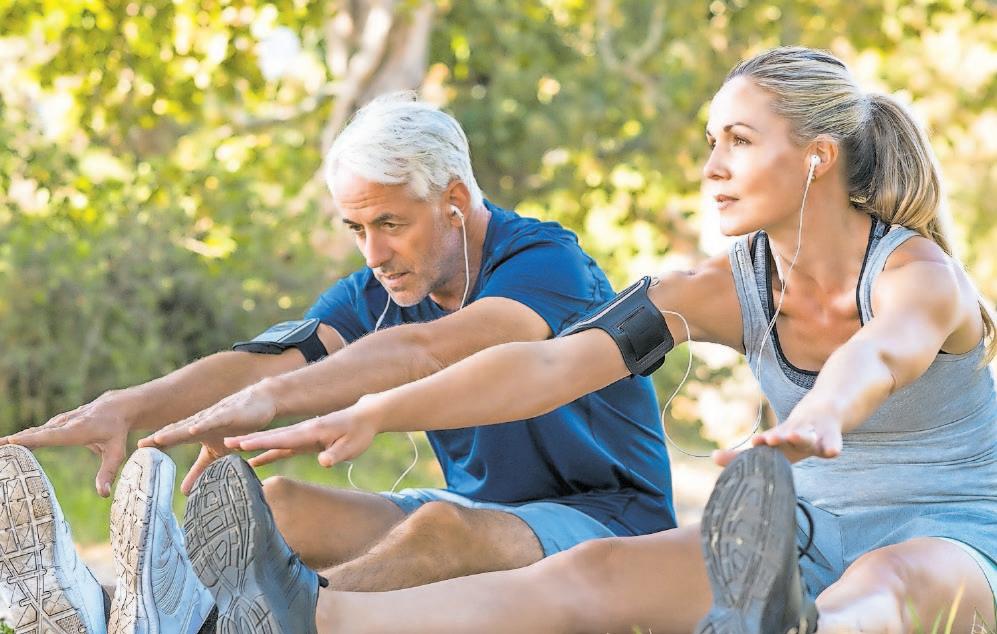
2 minute read
Get moving The do’s of exercising safely in the heat

As the temps rise, we can easily overdue it by not paying attention to the effect temperature has on our bodies.
“Many cases of heat illness are preventable and can be successfully treated if such conditions are properly recognized and appropriate care is provided in a timely manner,” said certified athletic trainer Brendon McDermott, MS, ATC.
To guard against heat illnesses, the National Athletic Trainers Association recommends following these easy steps:
√ Gradually increase activity in terms of intensity and duration in the heat. This prepares your body for more intense, longer duration exercise in warm conditions, and helps prevent injury and heat illness.
√ Intersperse periods of rest during activity and assure adequate rest between exercise bouts. Proper sleeping habits also decrease your risk.
√ Begin outdoor activities only after you’re properly hydrated. Drink water or sports drinks throughout physical activity.
√ A darker urine color is a quick indicator of dehydration. Your urine should look more like lemonade than apple juice.
√ Exercise during cooler portions of the day (early morning or late evening), if possible.

√ Do not participate in intense exercise if you show signs of an existing illness (i.e. fever, diarrhea, extreme fatigue, etc.). These can decrease your body’s tolerance for heat and increase your risk of a heat illness. Understand

Heat-Related Ailments
“We are not invincible when it comes to exercise in the heat,” McDermott says. “In extreme cases, if medical care is not provided in a timely manner, long-term damage can occur.” Keep in mind these heat-related conditions when working or playing outside.
Exertional Heat Stroke. Thi extremely serious illness can result in death unless quickly recognized and properly treated. Signs and symptoms include an increase in core body temperature (usually above 104°F/40°C); central nervous system dysfunction, such as altered consciousness, seizures, confusion, emotional instability, irrational behavior or decreased mental acuity; nausea, vomiting, or diarrhea; headache, dizziness, or weakness; increased heart rate; decreased blood pressure or fast breathing; dehydration; and combativeness.
What to do: It’s very important that treatment be both aggressive and immediate, provided adequate medical personnel are on site. Key steps to take when exertional heat stroke is identified include immediate whole-body cooling, preferably through cold-water immersion, followed immediately by medical treatment in an emergency room or trauma center.
Heat Exhaustion. This moderately serious illness results from fluid loss or sodium loss.
Signs and symptoms include loss of coordination; dizziness or fainting; profuse sweating or pale skin; headache, nausea, vomiting or diarrhea; stomach/intestinal cramps or persistent muscle cramps.

What to do: Be immediately be transported to a cool, shaded environment with feet elevated, and replace fluids. If condition worsens or does not improve within minutes, go to the emergency room for evaluation and treatment. Those suffering from heat exhaustion should avoid intense activity in the heat until at least the next day.
Heat Cramps. Heat cramps are often present in those who perform strenuous exercise in the heat. Conversely, cramps also occur in the absence of warm or hot conditions, which is common in ice hockey players. Signs and symptoms include intense pain (not associated with pulling or straining a muscle) and persistent muscle con- tractions that continue during and after exercise.
What to do: People suffering from heat cramps should cease activity, consume high sodium food, a sports drink and stretch the affected muscle. They should also be assessed by a professional to determine if they can return to activity. If cramping progresses in severity or number of muscle groups, patients should be transported to the emergency room for more advanced treatment.
Courtesy of National Athletic Trainers’ Associatio
Photo: Be aware of your fitness limitations and respect them. If you’re not in good physical condition and not conditioned for activity in hot weather, you’re more vulnerable than a well-conditioned athlete








